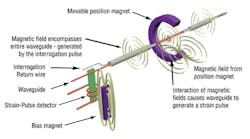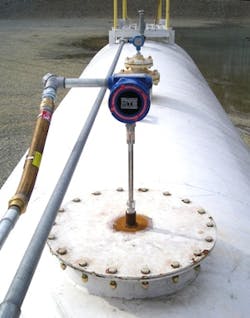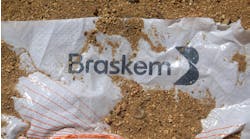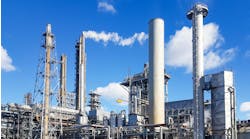Although the market for level measurement sensors is expected to decline by nearly 15% this year, growth will resume late next year or in early 2011 — driven in particular by the requirements of the chemical, petrochemical and pharmaceutical sectors. So says a market study released in mid-August by VDC Research Group, Natick, Mass. Increased demands for efficiency gains and regulatory compliance are fueling that long-term growth, it notes.
VDC ranks Endress+Hauser (E+H), Emerson Process Management, Vega Grieshaber, Yokogawa Electric and Siemens Milltronics Process Instruments as the top five suppliers of process level measurement devices worldwide. “It is critical to remember that this market is highly fragmented, with dozens of other segment leaders operating in very specific technical or installation environment niches,” cautions Chris Rezendez, VDC’s president. Indeed, Chemical Processing’s latest Readers’ Choice survey (www.ChemicalProcessing.com/articles/2009/133.html) offers a somewhat different ranking — Emerson, E+H, Ohmart Vega and Magnetrol. Our survey doesn’t look at market share but instead at which vendors readers consider technology leaders in 44 categories.
Improved technology promises to redefine the role of level instruments. “With a wealth of information now available, what was once a simple level switch or transmitter for monitoring and control purposes may now be a powerful source of valuable long-term process data. By understanding the wide range of level measurement technologies available, engineers in the chemical sector can take full advantage of their different benefits and applications,” notes Tim Chettle, marketing manager, level and pressure products, for Emerson’s Mobrey Measurement Division, Slough, U.K.
While technological advances certainly are improving level measurement capabilities, they also are posing challenges, as Dr. Egon Held, senior automation manager at BASF’s Instrumentation Technology Department in Ludwigshafen, Germany, explains: “Level measurement technology is used by BASF in a wide field of applications and we have a lot of experience in applying not only well-established but also the latest non-contact technologies on the market such as radar or laser. In the last few years, the performance of these systems has increased significantly, so that now many more measuring tasks can be solved. However, their application and configuration is rather complex and we have specialists to find the optimum parameters for level detection in the different chemical processes.”
One of the company’s strategies for dealing with this challenge is to use only approved device types from selected suppliers. “A standardized test procedure has to be completed in our centers of technical expertise including site tests. We have an internal standard list for instrumentation to assure that only proven-in-use level measuring equipment with high functionality and reliablity is installed in our plants.”
Solving Long-Term Problems
Today’s advanced measurement solutions can address process challenges that have dogged some plants for ages.
For example, in September E+H, Kildare, Ireland, completed a major overspill protection project for Apollo Adhesives in Tamworth, U.K. that solved a persistent problem. Apollo, whose core products are a range of solvent-based adhesives, was having trouble measuring very-low-dielectric-value mixed and chlorinated solvents with stored in underground vessels. The manual measurement method used was time-consuming and not precise enough. The company required an accurate and reliable automated system that would provide real-time data and give low-level alerts to avoid running out of stock as well as high-level alerts to avoid overspill. It also had to be electrically suitable for a zoned explosive area.
The low-level alarms were particularly important as Apollo wanted to ensure that raw materials always were readily available to meet customer demand and to facilitate ordering in bulk from suppliers to reduce delivery costs. The high-level alarms, meanwhile, would help protect the environment and employees from danger.
E+H supplied eight Levelflex M FMP40 coaxial guided-wave-radar (GWR) devices that accurately measure low dielectric materials and also comply with the necessary electrical requirements. Additionally, E+H installed eight RIA261 loop-powered field displays in the hazardous area for use by tanker drivers during filling operations. A separate panel next to the hazardous area incorporates all hardware to generate the high- and low-level alarms as well as a siren and beacon — and provides signals to an additional panel situated inside the main office building.
This system provides Apollo with direct access to real-time data about the level of raw materials and thus plenty of time to replenish stocks when levels get low.
As a result, the company now saves on transportation costs by avoiding repeat deliveries by suppliers, and frees staff from having to take the manual measurements. More importantly, Apollo reduced the risk of running low on stock or completely running out of stock, which would lead to manufacturing downtime and incur great costs.
Emerson also sees a strong role for GWR at process plants. “We estimate growth of around 14% from 2008–2013 compared to 4.1% for continuous level measurement in general,” says Chettle.
With GWR, a pulse of microwave energy is transmitted down a probe rather than through the air. The devices are an easy fit to many applications, eliminating concerns associated with in-tank issues such as obstructions, foaming and turbulence. Software allows detecting and tracking the interface between two liquids, for example in a separator, giving users a reliable measurement to optimize control. However, one potential problem with GWR is that the instruments are contacting devices and may not work well in some applications involving hydrocarbons where very low dielectrics and dirty product coating the probe can significantly reduce the reflected signal.
Plants increasingly are relying on radar level measurement technology to generate tank graphs — effectively maps of tank echoes. By analyzing and comparing such graphs over time, users can identify trends that may help in planning maintenance or making long-term improvements.
“The market for microwave [radar] and ultrasonic level transmitters continues its rapid growth across an expanding application base, thanks to their proven reliability and low maintenance requirements. Meanwhile, differential transmitter level systems benefit from better system construction, sizing and installation practices, giving increased installed reliability, while point level switches are widely used to meet safety standards for high/overfill and low level measurements,” notes Chettle. He expects further developments in enhanced instrument diagnostics to enable remote interrogation of instrument condition and advance warning of potential problems.
However, E+H is finding that ultrasonic level measurement isn’t the preferred technique among chemical customers. “This is because the media to be measured [are] usually very corrosive and therefore conditions cannot ensure repeatability. In addition, vapors which occur within the chemical processes may lead to accuracy problems. And last but not least, the ultrasonic level devices will not work on vacuum systems and above three bar: all of which are also common within the chemical industry,” notes Brian O’Connell, a sales engineer based in Kildare, Ireland.
“Regarding the differential pressure technique, regardless of the industry, this device is not easy to install and therefore may lead to accuracy issues if not installed properly. The media within the chemical processes are not always stable, therefore the density changes, which again may lead to accuracy issues. And finally, customers may have issue with the poor turndown of this device, again a limited ability to measure a wide range,” cautions O’Connell.
However, he adds an important proviso to his observations: “These points are general statements. Of course, with the right installation and a very good understanding of the application and the requirements from the customers, these solutions can be successful.”
More Accuracy And Repeatability
“For level measurement requirements in the chemical industry, we have seen the focus shift towards accuracy and repeatability,” says Lee Aiken, product marketing manager for MTS Systems, Sensors Division, Cary, N.C.
This drive for more accuracy and repeatability has proved a boon the company’s magnetostrictive level transmitter technology. Originally invented and used for linear displacement applications such as motion control and machine automation, the technology was adapted by MTS for measuring liquid levels (Figure 1). Its instruments can check product level, interface level and temperature using one process opening and one transmitter. Their quality is higher than competitors, claims the company
“If you compare this [transmitter] with a reed-switch transmitter they will be very similar until you look at the accuracy and repeatability. A typical reed-switch transmitter is accurate to ¼ in. whereas MTS is accurate to 1/16 in.,” he says.
Aiken cites the case of a chemical customer that uses a proprietary liquid that costs $1,000 per inch in the tank. “The high accuracy of our level transmitters provides better control of processes and inventory levels which leads to better asset optimization. This is achieved by only ordering inventory when necessary and by using the correct amount of consumables in a process. With such high costs, it is easy to see how using the high accuracy of MTS level transmitter keeps a company from wasting money,” declares Aiken.
Meanwhile, at Emerson the quest for accurate measurement while meeting ever more stringent health and safety regulations, reducing maintenance costs and improving reliability continues to drive the company to provide better performing instrumentation with more functionality at lower cost.
One of its latest developments is a rapid (3-ns.) solid-state switch for transmitting and receiving the radar signal in a GWR device. Named direct switch technology (DST), the system reportedly provides a measurement signal that’s many times stronger than that from traditional GWR devices. It is said to offer reliable measurement over long distances and with very low dielectric materials, even when using a single lead probe. Another advance is the use of a smart galvanic interface that increases the ability of the transmitter to handle electromagnetic interference, a common phenomenon in open tanks and plastic vessels.
Magnetrol International, Downers Grove, Ill., also is enhancing its lineup. Its Digital E3 Modulevel liquid level displacer transmitter features Foundation Fieldbus H1 communications prototcol. The new transmitter is said to deliver a range of benefits, including: lower installation and operating costs due to reduced need for cable, cable trays, conduits and associated hardware; interoperability across vendors; remote diagnostics; and highly reliable data transmission.
The company’s second new offering is the Model R82 radar transmitter for level and volume applications. The emphasis here is on improved cost-competitiveness; the device allows internal adjustment of beam orientation without removing the unit from the vessel, as well as HART-communication and PACTware capabilities.
For its part, Vega, Schiltach, Germany, used the ACHEMA trade show in May to showcase the next generation of its successful plics product concept. In plics plus, reduced complexity is the key. Features include simpler adjustment thanks to an enhanced indicating and adjustment module, pluggable terminal blocks and mechanical disassembly aids, plus low operating voltage and faster signal processing.
Seán Ottewell is Chemical Processing's Editor at Large. You can e-mail him at [email protected].





